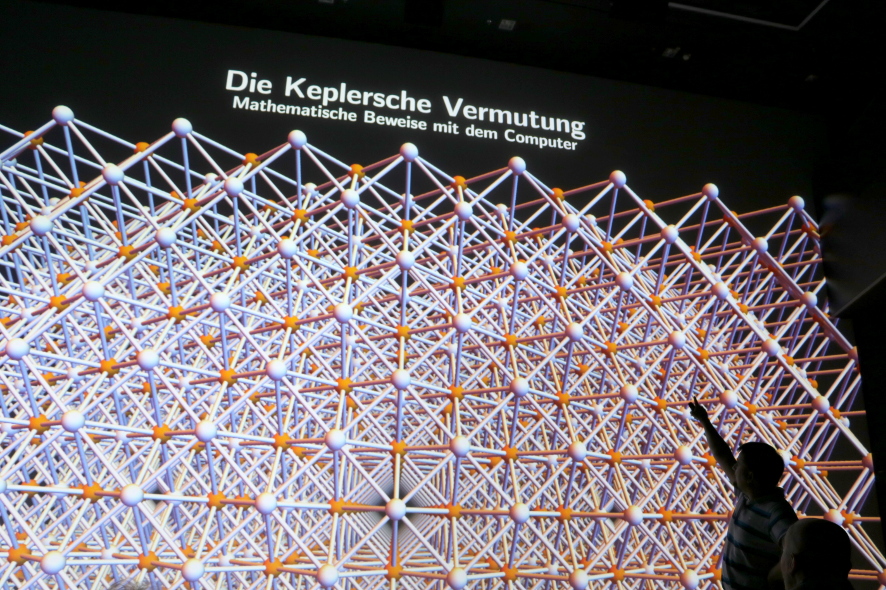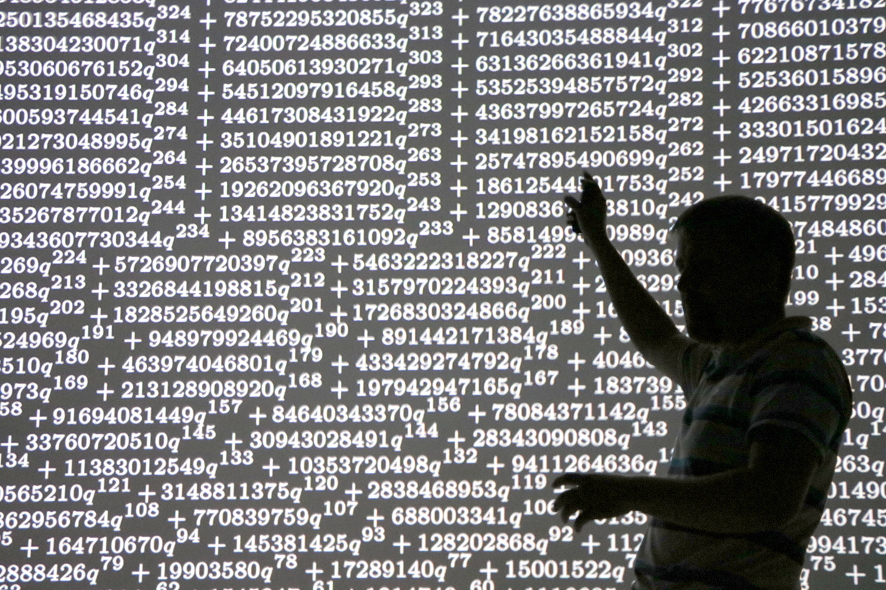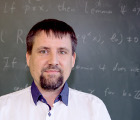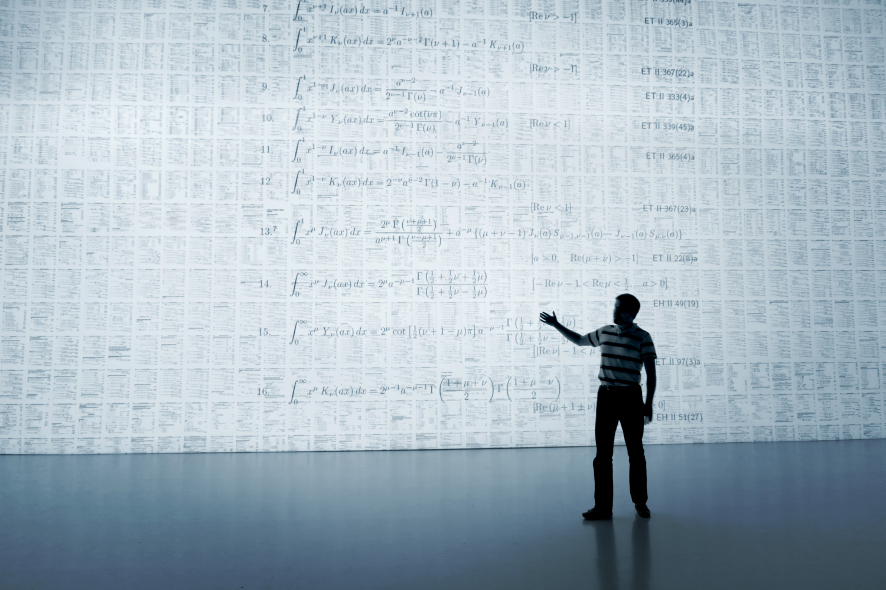Johannes Kepler University’s faculty includes outstanding research scientists whose work is quoted in some of the most highly respected scientific journals worldwide but in their homeland, Austria, they’re hardly known. So, who are these brilliant young Upper Austrian scientists and what exactly are they doing research on? It’s high time to put these high-achievers on stage and present them to the public! This is what motivated JKU and the Ars Electronica Center to launch the series of talks entitled Deep Space LIVE: Next Generation JKU.
The next—and, for the time being, last—speech in this series is set for Thursday, June 1, 2017 at 7 PM. The topic is mathematics. Dr. Christoph Koutschan, mathematician and research scientist at JKU’s Johann Radon Institute for Computational and Applied Mathematics (RICAM) will discuss the so-called Kepler conjecture. We chatted with him about how state-of-the-art computer technology can prove mathematical hypotheses and some of the other interesting developments in the world of mathematics.
Dr. Koutschan, what is the Kepler conjecture and why has it taken 400 years to prove it?
Christoph Koutschan: The Kepler conjecture is a mathematical conjecture about sphere packing in three-dimensional Euclidean space. It says that no arrangement of equally sized spheres filling space has a greater average density than that of the cubic close packing (face-centered cubic) and hexagonal close packing arrangements—for example, the way oranges are stacked. This conjecture was so hard to prove because there are theoretically an infinite number of ways to arrange a quantity of spheres in a space. Thus, one would have to compute that none of these infinitely many arrangements has a higher density than cubic-hexagonal close packing.

Credit: Magdalena Sick-Leitner
In your speech, one of your topics will be Thomas Hales’ proof in 1998. What was the difficulty with accepting this proof beyond a shadow of a doubt? And this brings us to the subject of proof by computer—what’s the current view of this among experts?
Christoph Koutschan: The proof is based on very elaborate and complicated computer calculations that took several years to run. In addition to a 100-page-long manuscript, it includes thousands of lines of program code and several gigabytes of data. Testing the absolute correctness of such a convoluted mass of material is practically impossible. The 12 referees, following a year of work on this task, capitulated and stated that they were merely able to achieve 99% certainty of the correctness of Hales’ proof. In 2003 Hales launched the Flyspeck project that aimed to formalize his original proof—i.e. to break it down into its constituent steps that follow the rules of logical derivation. Such a formal proof is not necessarily shorter but it can be checked with a relatively simple computer program. This project was concluded in 2014 and the proof is now generally accepted.
There’s a whole series of important, unsolved mathematical problems, some of which have been waiting for a solution or proof for centuries. As a non-mathematician, one has the impression that many of these problems will be solved within a few years. After all, bigger and faster computers are now being deployed …
Christoph Koutschan: No, unfortunately it’s not that simple. Consider the fact that a very essential step in proving the Kepler conjecture was the preparatory work done by Hungarian mathematician László Fejes Tóth, who suggested a theoretical argument that reduced the infinite number of sphere arrangements to be tested down to a finite number. It was precisely this step that made it possible even to consider using a computer.
Two very prominent unsolved problems are the Riemann hypothesis and Goldbach’s conjecture. The Riemann hypothesis is a conjecture that the Riemann zeta function has its zeros only at the negative even integers and complex numbers with real part 1/2. Goldbach’s conjecture states that every even integer greater than 2 can be expressed as the sum of two primes. As in the case of the Kepler conjecture, these still-unsolved mathematical problems also require testing of an infinite number of cases. The difference is that in these two, unfortunately, no one has yet succeeded in reducing the number of tests to a finite number. Believe me—if that were the case, I’d be the first put JKU’s Mach mainframe computer into operation to complete the proof!

Credit: Magdalena Sick-Leitner
What concrete areas of application are there for the Kepler conjecture, aside from the obvious ones—stacking fruit in a market stall or packing and transporting spherical objects?
Christoph Koutschan: I’m not aware of any other direct applications. But it’s interesting to note that the methods that Hales developed and used for his proof have been extremely useful in other areas—for example, the compression of digital data, which is also a matter of packing data as densely as possible into a file. The method of linear optimization that was employed and refined by Hales is also used, for example, in traffic management and to optimize production processes. In this respect, the Kepler conjecture resembles the q-TSPP conjecture that I’ll also be going into in my talk, and which I and my colleagues at JKU and in the USA succeeded in proving in 2011. Here too, it’s not the result itself that’s interesting for applications but rather the methods we developed that were necessary to arrive at a proof.
As a participant in the Next Generation JKU series of talks, you have the possibility of using the technology in Deep Space at the Ars Electronica Center. What benefits does this yield for the presentation of your research?
Christoph Koutschan: For one thing, of course, the huge screen is wonderfully suited to communicating content in ways that makes it both understandable and fascinating. Often when giving a talk at a conference, I’m faced by the problem that an overhead projector slide is full after only a few sentences and formulas, so I’m incessantly switching slides. In Deep Space, each individual slide can remain on screen longer and it can also be enhanced with graphical elements. Where else would it be possible, for example, to screen the first 100,000 prime numbers or a polynomial of degree 680? Plus, I’ll be able to take advantage of the 3-D technology to show the beauty inherent in mathematics.

Christoph Koutschan studied at Friedrich Alexander University in Erlangen-Nürnberg, Germany and then transferred to the Research Institute for Symbolic Computation at Johannes Kepler University in Linz, where he earned his Ph.D. in 2009 under the supervision of Peter Paule. His post-doc work was done during two one-year research stays at Tulane University in the USA and at the Institute for Research in Computer Science and Automation in France. He has been at JKU ever since. His habilitation procedure is almost concluded. Koutschans Forschungsgebiete liegen in der Computeralgebra und der Kombinatorik. He developed a software program which is on the one hand able to proof mathematical identities but can also figuratively analyse sums and integrals. With this tool he was able to solve several so far still-unsolved mathematical problems: one of the results gained in collaboration with Manuel Kauers (JKU) and Doron Zeilberger (Rutgers University, USA) was awarded well-respected Robbins-Prize of the American Mathematical Society in 2016.
“Next Generation JKU” is a five-part series of presentations that gives interested member of the general public an opportunity to learn about the latest research findings in socially relevant fields by young scientists on the faculty of Linz’s Johannes Kepler University. The talk on mathematics by Dr. Christoph Koutschan concludes this series for the time being.
To access a live stream of Dr. Koutschan’s entire address on June 1, 2017 beginning at 7 PM, click here:
Blog postings about talks in this series:
